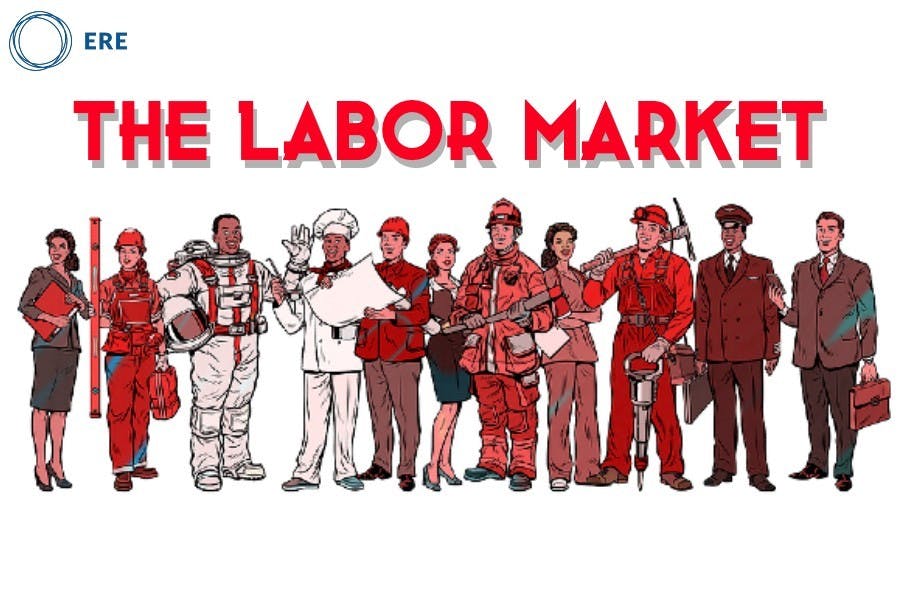Job creation slowed dramatically in April. After gains of 536,000 in February, and 770,000 in March, predictions were that a million jobs would be added in April. Instead the increase was barely a quarter of that at 266,000.
Labor availability is the single biggest factor limiting job creation — 92% of small-business owners trying to hire reported few or no “qualified” applicants for the positions they were trying to fill in April.
But there’s no single explanation for why there’s a labor shortage in a time of high unemployment. The Federal unemployment supplement of $300 per week is one possible culprit, since it replaces 74% of lost wages for the average person. That’s average; many people can make more. In Florida, an unemployed person can get up to $3,600 per month or $20 per hour.
At that level, unemployment benefits become competitive with earned income, greatly reducing the incentive to get a job. Other factors include a shortage of child care, fear of the virus, and continued hybrid or online schooling that limit many, mainly low-income parents, from returning to work.
The government’s attempts to increase job creation may have limited effect. The proposed infrastructure bill is supposed to create up to 16 million jobs as a result of $2.7 trillion in spending, but that may be an overly optimistic projection. An earlier analysis showed that infrastructure spending of about half that amount would create between 200,000 and 400,000 jobs over 10 years, but could be offset by job losses elsewhere — i.e., there could be no net gain in employment.
The history of such spending doesn’t do much to support the claim either. The last large infrastructure funding created at most 200,000 jobs, and may have created only a tiny fraction of that amount. It’s difficult to understand why this time around the outcome would be significantly different.
The Risk to Employers
Aside from the economic impact of not having enough workers, the main risk to employers is the start of a wage-price spiral. Inflation has surged to 4.2% in April, the highest it has been since 2008. Some of this was expected as the vaccine rollout freed people up to return to visiting restaurants, traveling, and spending the money they saved during the pandemic.
But rising inflation raises expectations that prices will keep rising, regardless of the reasons prices rose in the first place. This pressures employers to raise wages and salaries because employees demand increases to make up for their loss of purchasing power. Employers that pay out more compensation then raise prices to make up for the increase in labor costs, which further pushes up inflation. The cycle doesn’t break until inflation expectations start to drop.
And people are expecting prices to keep rising over the year-ahead, by about 4% (for now). Combine that with a labor shortage, and employers should expect to pay more to attract new workers and keep current ones. The evidence for that is already starting to show in data on wages and prices. Average hourly pay for hotel and restaurant workers is trending steadily upwards. There’s also anecdotal evidence, such as the case of a McDonald’s offering candidates $50 to just show up for an interview, and still having trouble filling jobs. Also, 36% of small businesses have raised prices in April, mainly in response to rising labor costs.
Another factor is that the pandemic has fundamentally altered the economy and the labor market. The shutdowns and changes in consumer behavior changed the way businesses operate — more delivery, less in-person shopping, a need for housing in rural areas and outlying suburbs, and empty downtowns. The speed of the change has created a sizable and growing mismatch between skills and availability of labor and the demand from employers. Much of the change may be permanent and will take a long time for the labor force to adjust. Unemployed restaurant workers cannot easily become qualified to work in manufacturing or move to new locations far from where they live. So it could take several years for the labor market to reach a point where supply matches demand.
Many economists are predicting that the price rises will be temporary, but inflationary trends don’t reverse easily. The temporary period can be a long one. In coming months watch for wage and price increases as evidence of a wage-price spiral.
Editor’s note: I’d like to take this opportunity to thank Raghav for all his contributions as The Labor Market columnist. Starting next month, though, there will be a new voice penning this column (stay tuned!). However, Raghav isn’t disappearing! He’ll continue to share his insights on the workforce on ERE’s sister site, TLNT. I hope you’ll continue to read his insights there.
